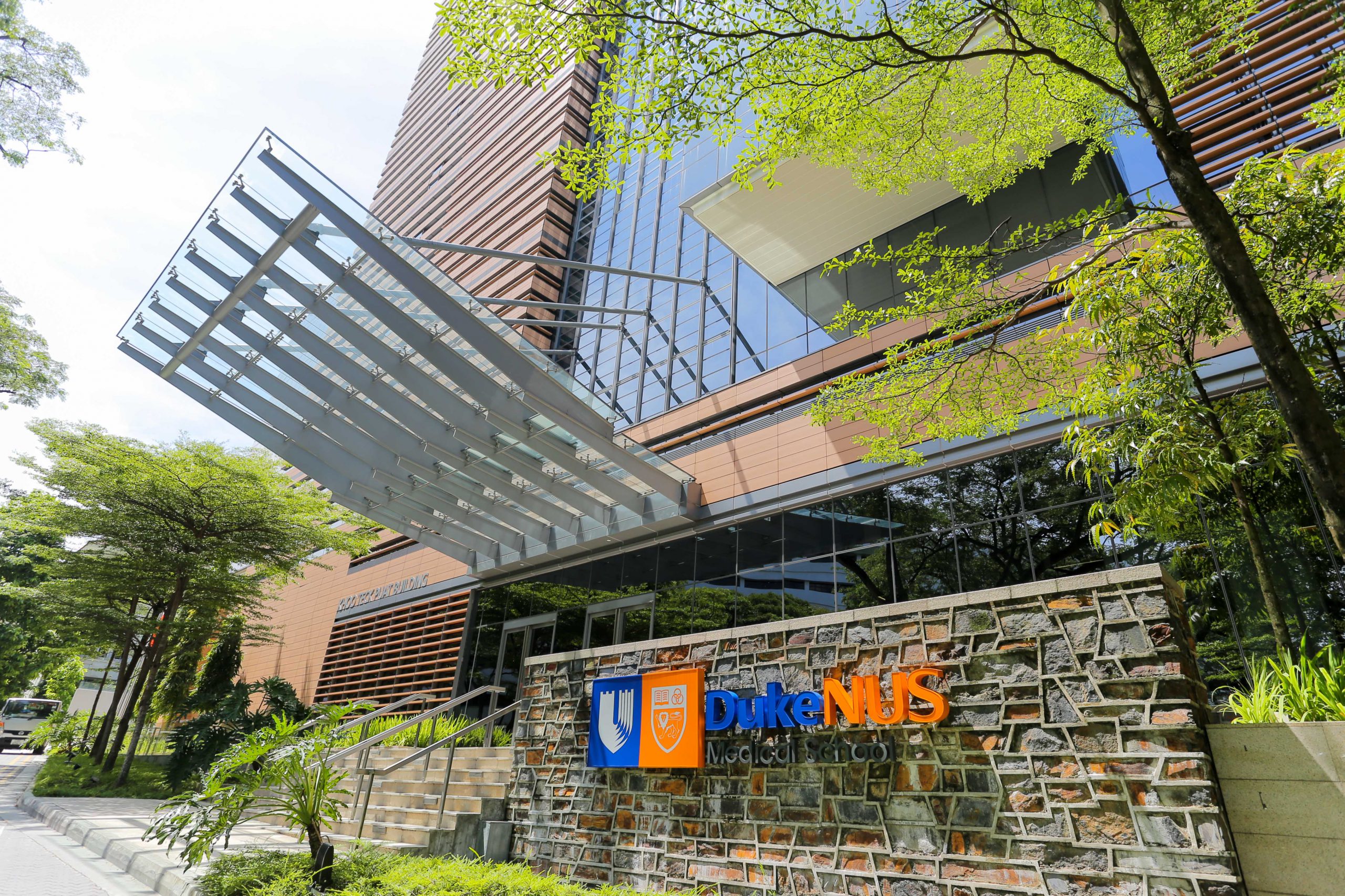The Idea of the University: National Asset or Ivory Tower?
July 8, 2023

Photo: ‘Facade and front sign of Duke NUS campus’ by Kelman Chiang from SRN’s SG Photobank
In 2021, Minister for Education Mr Chan Chun Sing kicked off the inaugural SkillsFuture Month, held between 8 July and 22 August. In his opening speech at the Singapore Institute of Technology, he highlighted the growing need for closer linkages between institutes of higher learning (IHLs), including universities and industry partners. Such expectations of universities are situated in the context of Singapore’s demands for an educated and highly skilled workforce, which seemingly marks a turn from universities’ traditional role as an intellectual sanctuary removed from social phenomena and real-world practicalities.
In ‘The Idea of the University: National Asset or Ivory Tower?’ (in Places of Engagement (Amsterdam University Press, 2018)), Associate Professor Huang Hoon Chng (NUS English, Linguistics and Theatre Studies) addresses the common misconception that universities are only either national assets or ivory towers. She argues instead that universities are both intellectual and social institutions, as places of innovation that are still subject to some societal demands.
Firstly, A/P Chng points out that the phrase ‘the university’ misleadingly implies a homogenous entity. In reality, universities have many differences in national contexts and therefore prioritise different roles and purposes.
This has become clearer in the age of globalisation, with its myriad effects on education. While many academics have benefited from global access to networks and information, the increased competition for talent and on university rankings has exacerbated performance pressure. Moreover, many academics also lament that universities worldwide are increasingly shaped by economics and funding models, turning into enterprises subject to market forces. Lastly, widening social inequalities and the need for social restructuring in many economies have also placed new demands on universities to become sites of reskilling and lifelong learning.
As such, universities do not exist in a vacuum, but are ostensibly social institutions that must remain relevant to society. In Singapore, universities are state-supported and have to consider externally defined agendas due to their linkages to industry and government. An ageing population coupled with the projected misalignment of skills to future jobs are also the key drivers of change in universities.
A/P Chng thus argues that the university of the future will derive its right to exist primarily from being active in the world and by producing knowledge for the world. The engaged university must therefore generate knowledge that is socially valued while simultaneously safeguarding and protecting innovative and high-stakes research.
A/P Chng also highlights one important way to connect the ivory tower to society. Academics must empower all undergraduates to learn by undertaking research, so that they cultivate both disciplinary expertise and important life skills, such as critical thinking, evaluation, analysis and creativity.
In conclusion, the university of the future is an intellectual institution, with academics as knowledge builders, and is also a social institution, with academics shaping futures and economics through the education they offer. To fully harness the potential of this “hopeful community”, governments and public stakeholders should trust universities and honour the latter’s integrity as autonomous bodies.
Read the chapter here.
